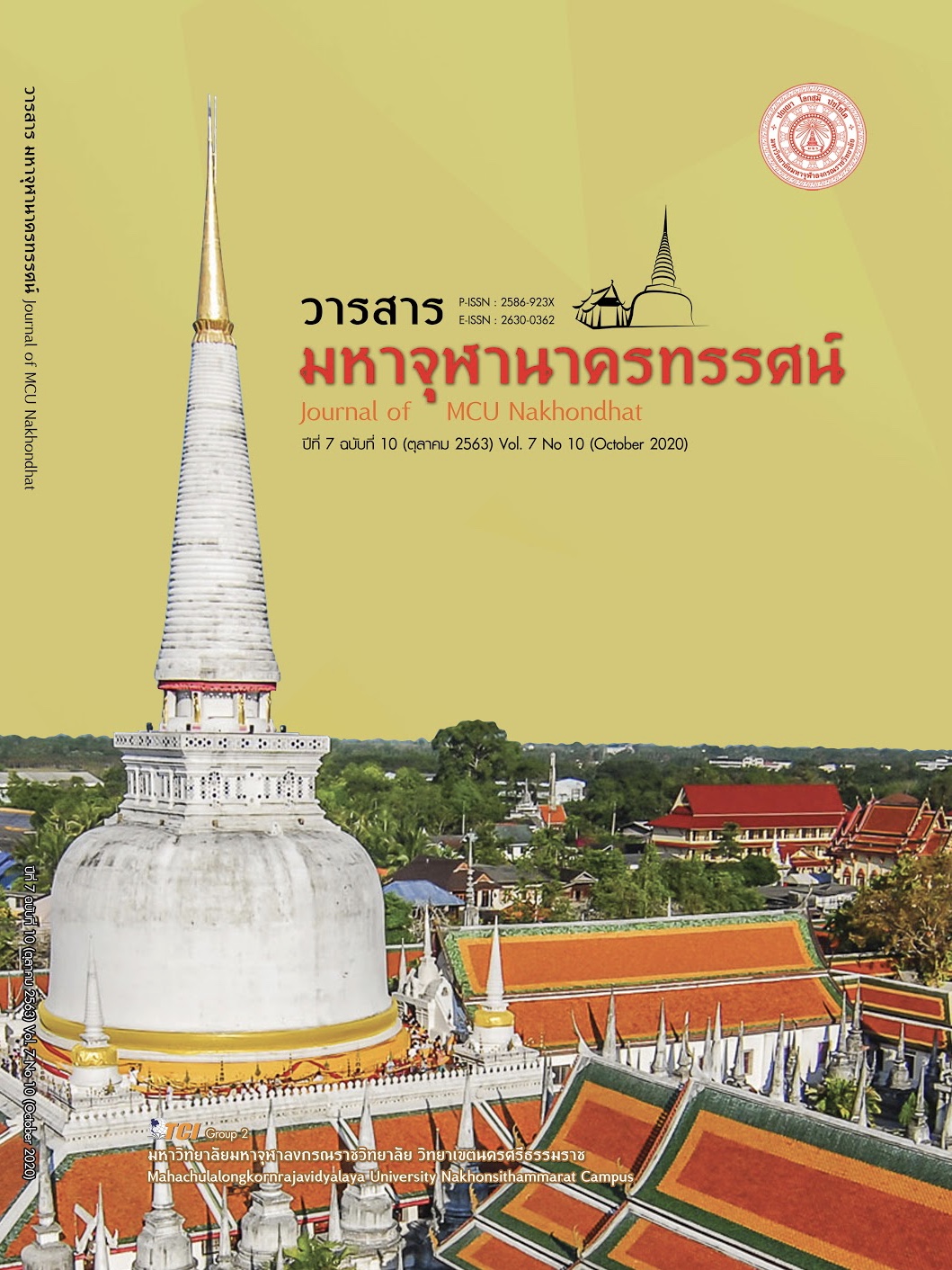INTERNAL CONTROL ACCORDING TO COSO GUIDELINES INFLUENCING THE EFFICIENCY OF INTERNAL CONTROL OF THE REVENUE OFFICE REGION 1 IN BANGKOK
Main Article Content
Abstract
The Objectives of this research article were to study internal control according to COSO guidelines that influence the internal control efficiency of the Revenue Office Region 1 in Bangkok. Its objective is to study internal control according to COSO guidelines that influence the internal control efficiency of the Revenue Office Region 1 in Bangkok. The data was collected from 336 personnel of the Regional Revenue Office in Bangkok by determining the sample size from the Yamane formula. At a 95% confidence level, questionnaires were used to collect data. The data were analyzed by descriptive statistics, frequency, percentage, mean, and standard deviation (SD), and hypothesis was tested by using multiple regression analysis. Regression Analysis) at the statistical significance level of 0.05, the research variables were independent variables, namely internal control in 2 areas, consisting of control environment. And the risk assessment aspect and the dependent variable were the effectiveness of internal control in 2 aspects, consisting of planning, And operational aspects The results obtained from this research can be used as work practices. Or help supervise operations in accordance with the rules and regulations set forth And strengthen internal control efficiency in the long run. The results of the study showed that the internal control of the control environment Have a positive influence on the effectiveness of internal control Planning and operations Internal control in risk assessment Have a positive influence on the effectiveness of internal control Operational aspects But does not influence the effectiveness of internal control Planning.
Article Details
References
ณรินทร์ ชำนาญดู. (2548). การบริหารการควบคุมภายในสถานศึกษาขั้นพื้นฐาน. ใน วิทยานิพนธ์ศึกษาศาสตรมหาบัณฑิต สาขาวิชาการบริหารการศึกษา. มหาวิทยาลัยศิลปากร.
ตลาดหลักทรัพย์แห่งประเทศไทยและสมาคมผู้ตรวจสอบภายในแห่งประเทศไทย. (2548). แนวทางการตรวจสอบภายใน. กรุงเทพมหานคร: ดูมายเบส.
วัลลภ ลำพาย. (2547). เทคนิควิจัยทางสังคมศาสตร์. กรุงเทพมหานคร: สำนักพิมพ์มหาวิทยาลัยเกษตรศาสตร์.
ศุภชัย ลีลิตธรรม. (2550). ศึกษาความเป็นไปได้ในการนำระบบการควบคุมภายในตามแนวทาง COSO มาใช้กับการบริหารการไฟฟ้าส่วนภูมิภาค เขต 1 (ภาคใต้) จังหวัดเพชรบุรี. ใน วิทยานิพนธ์บริหารธุรกิจมหาบัณฑิต สาขาหลักสูตรและการสอน. มหาวิทยาลัยราชภัฏเพชรบุรี.
สุวิมล ติรกานันท์. (2546). ระเบียบวิธีวิจัยทางสังคมศาสตร์ : แนวทางสู่การปฏิบัติ. กรุงเทพมหานคร: โรงพิมพ์แห่งจุฬาลงกรณ์มหาวิทยาลัย.
อำนาจ ธีระวนิช. (2547). การจัดการ. กรุงเทพมหานคร: บริษัท ซี.วี.แอล.การพิมพ์.
Gable. (1986). Instrument development in the affective domain. Boston: MA: Kluwer–Nijhoff.
Hair, J. F. et al. (2006). Multivariate data analysis. (6 ed). New Jersey: Pearson Prentice Hall.
Ronna Turner & Laurie A Carlson. (2003). Indexes of Item-Objective Congruence for Multidimensional Items. International Journal of Testing, 3(2), 163-171.
Taro Yamane. (1967). Work and Motivation. New York: John Wiley and Sons.
Wainer, H. & Braun, H. I. (1988). Test Validity. Hilldale: NJ: Lawrence Earlbaum Associates.


